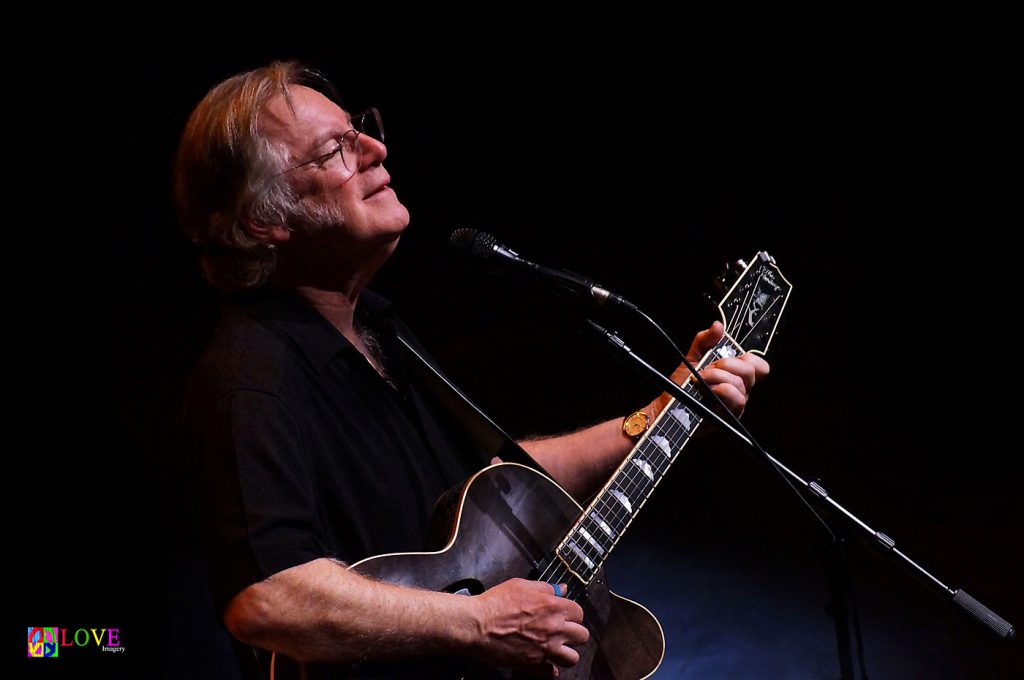
Rock and Roll Hall of Fame inductee John Sebastian has had an illustrious career, and it’s far from over. He still plays dozens of live shows a year, records when he can, and offers instruction on guitar and harmonica. Sebastian recently shared a stage with rock legend Dion and gushed over the experience of being able to play with one of his idols.
Sebastian will be performing solo at the Englert Theatre in Iowa City on October 15 on a double bill with David Bromberg, another folk-rock notable. He said he never uses a set list, but plans to play material from the entire spectrum of his career. Sebastian said his musical style hasn’t changed much over the years, and he attributes his initial popularity to being in the right place at the right time.
Sebastian grew up in Greenwich Village, the son of a classically trained harmonicist. Unlike his dad, Sebastian was drawn to folk and blues music, which he said could be found “everywhere, in the streets and the clubs and just in the air” when he was a young man in the early 1960s. Speaking over the phone from his New York home, Sebastian counted down the list of notables he would see on a regular basis, such as Mississippi John Hurt, Sonny Terry, and Lightnin’ Hopkins.
Soon Sebastian found himself playing guitar and harmonica with other musicians. That’s him on Fred Neil’s seminal folk record Bleecker & MacDougal and Tom Rush’s self-titled first album. He then joined the Even Dozen Jug Band with noted mandolinist David Grisman, Steve Katz of Blood, Sweat & Tears, and Maria Muldaur (then Maria D’Amato). Next he joined the Mugwumps, whose other members included half of the Mamas & the Papas (Cass Elliot and Denny Doherty) and Zal Yanovsky, who later formed a new combo with him—the Lovin’ Spoonful. At this time, Bob Dylan also invited Sebastian to join his new band, but Sebastian decided he wanted to have his own group—and he said he always knew that he’d made the right decision.

The Lovin’ Spoonful exploded onto the music charts. Their first seven singles written or cowritten by Sebastian reached the top 10, including the number-one hit “Summer in the City.” Sebastian explained, “I wasn’t trying to create anything different. I was just combining the music I loved into one big heap. If you listen, you can hear the echoes of John Hurt and jug bands, rockabilly 45s and Woody Guthrie, and all the stuff I loved in the songs.”
The Lovin’ Spoonful made kitchen-sink music. You can still hear pots and pans clanging in the background of their songs, along with noise from traffic and pedestrians, either because the recordings actually included them or because the musicians recreated them.
The original band broke up in 1968, but Sebastian continued to make mind-blowing music. He was one of the original performers at the Woodstock music festival in 1969, although he was not scheduled to perform. He was an attendee drafted to play acoustically because the rain made it impossible for the electric acts to go onstage (Santana was scheduled for that time slot). Sebastian’s appearance at Woodstock cemented his reputation as a live performer.
“I don’t think I played indoors after that for almost two years,” Sebastian noted jokingly. “In fact, I just played an outdoor fest outside Baltimore last week. Today’s music festivals aren’t the same as the old days, but there is still a hunger for them.”
He’s also credited with bringing tie-dye fashions into popularity. Sebastian was one of the first to create his own and wear them onstage, and the look soon became de rigueur for folk-rock musicians. “I don’t wear them anymore for a number of reasons, including not wanting to use lye, which really makes the colors brighter. Now you can see them everywhere, advertising everything from the Grateful Dead to Woodstock to the local college. I’m willing to accept the blame for that fashion faux pas,” he said with glee.
Sebastian recorded as a solo act for several years with a modicum of success. He also worked with a slew of other notable artists on their records. That’s him playing harmonica on the song “Roadhouse Blues” with the Doors, backing Gordon Lightfoot on the album If You Could Read My Mind, adding harmonica to Crosby, Stills, Nash & Young’s Déjà Vu, jamming with Jimi Hendrix on Timothy Leary’s album You Can Be Anyone This Time Around, and working with the Who’s Keith Moon on his only solo record, Two Sides of the Moon.
Sebastian also worked on movie soundtracks such as You’re a Big Boy Now and animated TV shows including Strawberry Shortcake and The Care Bears Family. While it seemed Sebastian’s ability to write hits had dried up by the mid-1970s, he had an unexpected number-one smash single in 1976, thanks to his theme for the television show Welcome Back, Kotter. That led to one of the more mysterious projects Sebastian had ever worked on, a theme song for the city of Des Moines.
“Des Moines wanted to work the song ‘Welcome Back’ into some kind of promotion,” Sebastian said. “They hired me to do the song. Somebody else made the track, but it just didn’t sound good. So they hired me to come in for the weekend and fix it. I did a vocal, but I guess it didn’t work out.” But as far as he knows, Des Moines never used the song.
